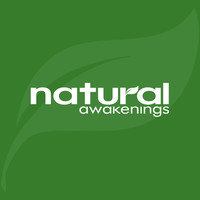
Fit Body
Fit Body
Cross-Brain Fitness: An Integrative Workout for the Mind and Body
Holistic approaches to health and well-being that consider the entire person—body, mind and spirit—are especially effective in cultivating creativity and mental equilibrium. Cross-brain fitness training encourages the use of both the left and right hemispheres of the brain in tandem to improve body and brain function.
One study published in Advances in Physical Education suggests that exercises involving movements across the middle of the body improved the ability to transfer motor skills from one hand to the other, most likely due to improved communication between the two sides of the brain. A 2016 study published in the Journal of Exercise, Nutrition and Biochemistry found that a 12-week brain health exercise program for seniors improved lower and upper body strength, as well as aerobic endurance, while also increasing cognitive function and levels of brain-derived neurotrophic factor, a protein that plays an important role in neuronal survival and growth.
Engaging Sports
Physical activities that engage both brain hemispheres boost health and enhance creativity by integrating analytical and creative thinking. Team sports such as soccer and basketball are excellent for cross-brain development. They demand strategic planning and logical thinking, activities typically associated with the left hemisphere. At the same time, they require players to use spatial awareness and creativity—skills linked to the right hemisphere. This combination encourages players to continuously switch between different modes of thinking, thereby improving brain agility and coordination.
“Team sports require players to analyze the game situation, anticipate opponents’ moves and strategize accordingly,” says Danielle Smith, a registered dietitian and personal trainer. “Players need to understand the rules of the game, their position-specific responsibilities and how to execute plays effectively. Team sports offer a great way for these skills to develop naturally in a fun environment.
Rock climbing is a prime example of an activity that blends cognitive demands. It requires meticulous problem-solving and advanced planning (left-brain activities) to choose the best routes and techniques for ascent. Simultaneously, climbers must employ spatial awareness and adaptability (right-brain activities) to navigate and adjust to new challenges on the fly, making it a comprehensive brain exercise.
Sailing combines the technical knowledge and analytical thinking characteristic of the left brain, such as navigating and understanding sailing mechanics, with the intuitive grasp of environmental elements like wind and water, a right-brain activity. Sailors must continuously interpret these dynamic elements and adjust their strategies accordingly, promoting an advanced level of hemispheric integration.
Implementing a Routine
Incorporating a variety of cross-brain training activities into a regular fitness routine is crucial for engaging different parts of the brain and maximizing cognitive development. Here are some tips and strategies for creating an effective cross-brain fitness routine:
- Add variety. Rotate between activities that challenge different cognitive skills. For example, blend team sports, which enhance strategic thinking and cooperation, with individual pursuits like rock climbing or sailing that require problem-solving and adaptability. This diversity not only prevents boredom but also stimulates different brain areas.
- Be consistent. Schedule brain-stimulating physical activities several times a week. This regular engagement helps to encourage new neural connections and improve brain function over time.
- Progress gradually. Start with simpler tasks and gradually increase the complexity of the activities as cognitive and physical abilities improve. This progression keeps the brain challenged and engaged as training advances.
- Track results. Use a journal or digital app to record the types of activities performed, their duration and any noticeable improvements in thinking, problem-solving or creative output. Also reflect on changes in emotional and mental well-being. Such monitoring is essential to appreciate the benefits of a cross-brain fitness routine.
- Check cognitive progress. Consider periodic cognitive assessments to formally measure cognitive improvements. These can be simple online tests designed to evaluate brain functions such as memory, attention, problem-solving and creativity.
Holistic Support
Cross-brain fitness can be supported by other activities during the day. Regular meditation, for example, quiets the mind’s chatter, allowing both sides of the brain to work in harmony, thus enhancing the ability to generate new ideas and solve problems creatively. “Meditation and mindfulness practices are associated with strengthening the brain's connectivity,” explains Kathleen Benson, a registered dietitian specializing in women’s health, sports nutrition and digestive health. “This can improve attention, memory, decision-making and general mindfulness. Regular practitioners often have improved emotional control, lower stress and clearer thinking.”
What we eat significantly impacts our brain function and overall health. A balanced diet rich in omega-3 fatty acids, antioxidants and proteins can enhance cognitive function and support both the logical and creative faculties of the brain. Foods like blueberries, nuts, fish and green leafy vegetables boost brain health and foster mental clarity.
Adequate sleep helps consolidate memories and clear brain fog, making room for new ideas and creative thinking. Sleep also balances the emotional states, ensuring that both the analytical and creative sides of the brain can function optimally without the interference of stress or anxiety.
David J. Sautter is a certified trainer, fitness-nutrition specialist, and health and fitness writer.
Original article published at Natural Awakenings National


 By
By







